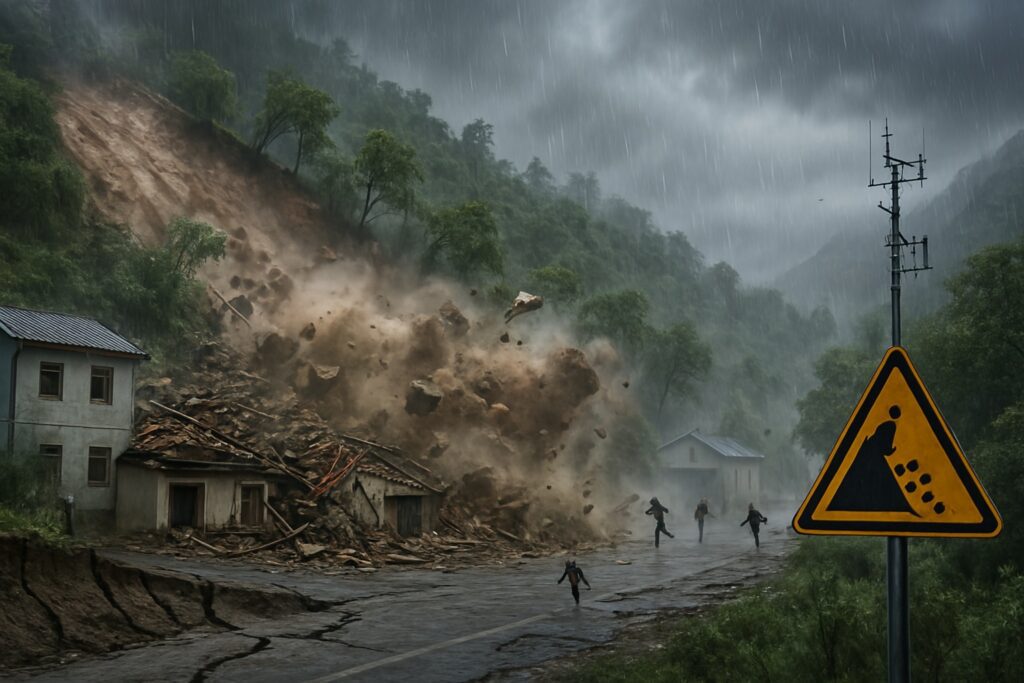Landslides are one of the most destructive natural disasters, occurring when rock, earth, or debris moves down a slope due to gravity. Triggered by natural and human-induced factors, landslides can cause severe damage to life, property, and the environment.

Table of Contents
What is a Landslide?
A landslide refers to the movement of a mass of rock, debris, or earth down a slope. It is a form of mass wasting, which denotes any downward movement of soil or rock under the influence of gravity.
Types of Landslides
- Rockfall – Sudden detachment of rocks from a steep slope or cliff.
- Debris Flow – Fast-moving landslides that consist of a mixture of soil, rocks, and water.
- Slump – A downward and outward rotational movement of soil or rock.
- Creep – Slow, gradual downhill movement of soil or rock.
- Earthflow – Flow of fine-grained materials, often occurring after heavy rainfall.
Causes of Landslides
Natural Causes:
- Heavy Rainfall: Saturates the soil, reducing its stability.
- Earthquakes: Shaking of the ground can trigger landslides.
- Volcanic Eruptions: Lava flows can destabilize surrounding land.
- Snowmelt: Sudden melting adds weight and moisture to the soil.
Human Activities:
- Deforestation: Removes roots that hold soil together.
- Construction & Mining: Disturbs the natural slope stability.
- Road Building: Alters drainage patterns and destabilizes slopes.
- Unregulated Agriculture: Poor farming practices increase erosion.
Effects of Landslides
- Loss of Life and Property: Homes, roads, and infrastructure can be buried.
- Transportation Disruption: Roads and railways can become impassable.
- Environmental Degradation: Forests, rivers, and ecosystems are destroyed.
- Economic Impact: Damage leads to heavy financial losses and recovery costs.
Regions Prone to Landslides in India
- Himalayan Region – Uttarakhand, Himachal Pradesh, Jammu & Kashmir.
- Western Ghats – Kerala, Karnataka, and Maharashtra.
- North-Eastern States – Assam, Meghalaya, Arunachal Pradesh.
- Nilgiri Hills – Tamil Nadu.
Preventive Measures
- Afforestation – Planting trees to strengthen soil.
- Terracing – Controlling surface runoff in hilly regions.
- Drainage Control – Preventing water accumulation on slopes.
- Retaining Walls – Building barriers to support soil.
- Slope Stabilization – Engineering solutions to reinforce weak slopes.
- Early Warning Systems – Monitoring weather and ground movement.
Conclusion
Landslides are a natural hazard that demand proactive management and awareness. While they cannot always be prevented, their impact can be significantly reduced through proper planning, early warning systems, and responsible environmental practices. With increased urbanization and climate change, the risk of landslides is rising, making it critical for both government and communities to act collectively.
Read: Geography Notes